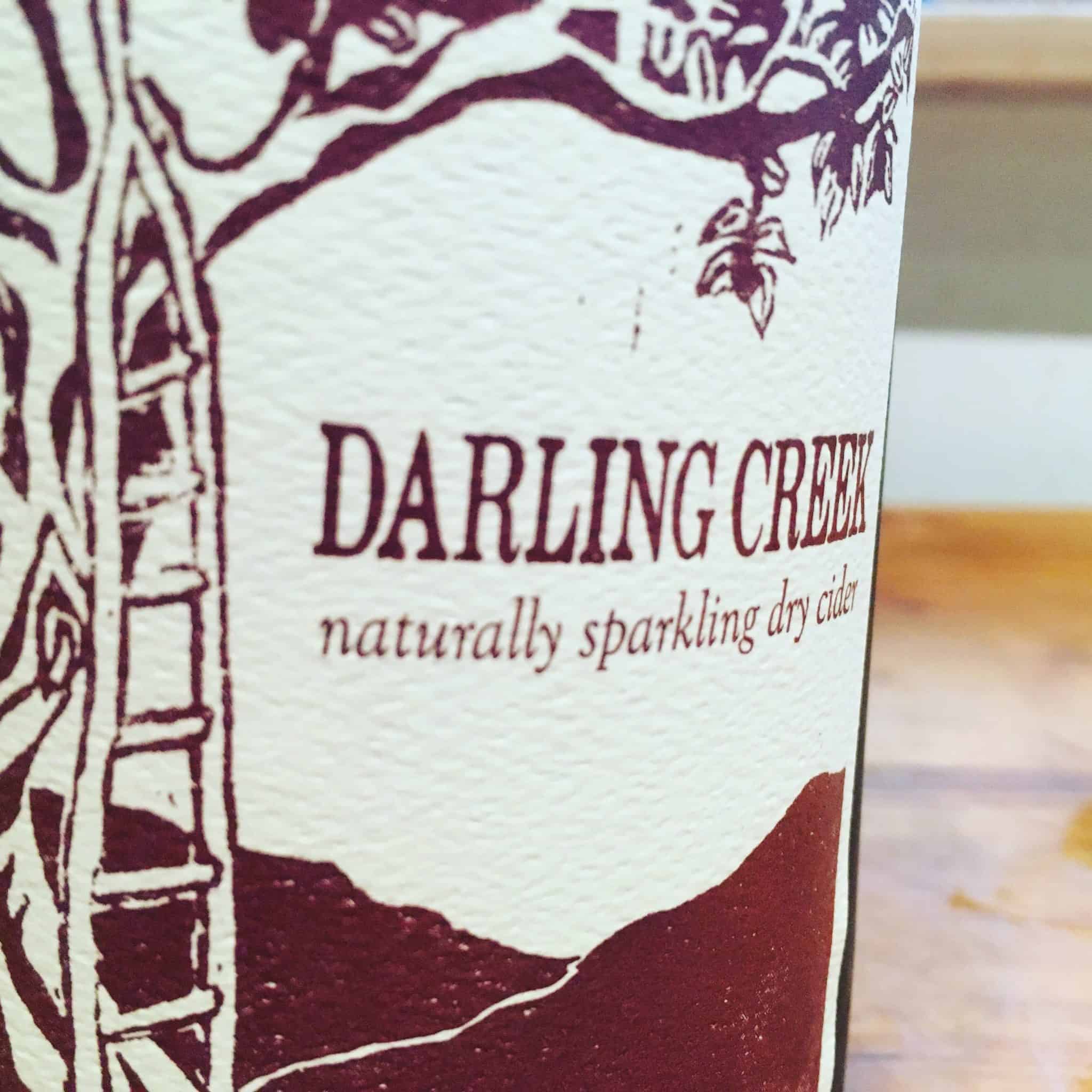Darling Creek Award Winning cider.
Our Darling Creek champagne method cider won best of class for traditional dry cider in the Dan Berger International Wine and Cider Competition.
This cider, made from 75% estate grown cider fruit and 25% apples wild foraged in the hills of Van Etten, is all about balance: juicy fruits are under lain with herbs and dust, mouthwatering acid, a hint of sweetness, and firm lingering tannins. You can see the cider winners here.
Try this cider yourself. It's easy to buy on our website and we ship to 36 states.
The Story of Darling Creek '15
Each year the theme of the Darling Creek story is acid: indeed this year two-thirds of the apples in the blend are considered high acid varieties. Where that acid comes from year to year varies. The 2015 chapter is especially surprising. It shows a big man in a bushy tree. A mountain climber in a tall apple seedling. One-quarter of the apples used in the 2015 Darling Creek blend were wild harvested in and around Van Etten, NY. Seventy-two bushels to be exact.
In the Spring of 2015, wild apple trees visible from the hilly roads in and near our Town produced a huge bloom, a biennial reaction to a freeze event in the Spring of 2012. That bloom forecast a vast wild apple crop. We talked to our friend Ben Kahn about gathering them. We paid him the going amount for cider varieties, but that included negotiating with the landowners and searching for the best trees out there. Also, we said, “you are an independent contractor. If you fall out of a tree, you are on your own.”
Also unusual about the 2015 Darling Creek is the use of un-inoculated fermentations. All of the wild apples we pressed we left to their own devices: we watched and waited.
Apple Varieties:
- Wild-harvested seedling 25%
- Krys 15%
- Bramley’s Seedling 11%
- Sommerset Redstreak 11%
- Gold Rush 8%
- Ellis Bitter 7%
- Wickson 7%
- Harry Master’s Jersey 5%
- Golden Russet 5%
- Akane 3%
- Northern Spy 3%
Fruit Source:
- 65% of the apples were estate grown
- 24% were wild harvested in the hills of Van Etten and Newfield
- 11% were grown by Eric Shatt at Cornell Orchard’s cider block.
Production Notes:
- 24% of the fermentations were wild ferment
- 76% were inoculated
- Primary fermentations in stainless steel
- Secondary fermentation in the bottle, Traditional Method.
- 380 cases produced
Numbers:
- Returned sugar 2%
- Alc/Vol 8%
- Titratable acidity 9.4 g/l
- pH 3.6
Learn more, and order yourself a bottle of Darling Creek in our cider shop.

